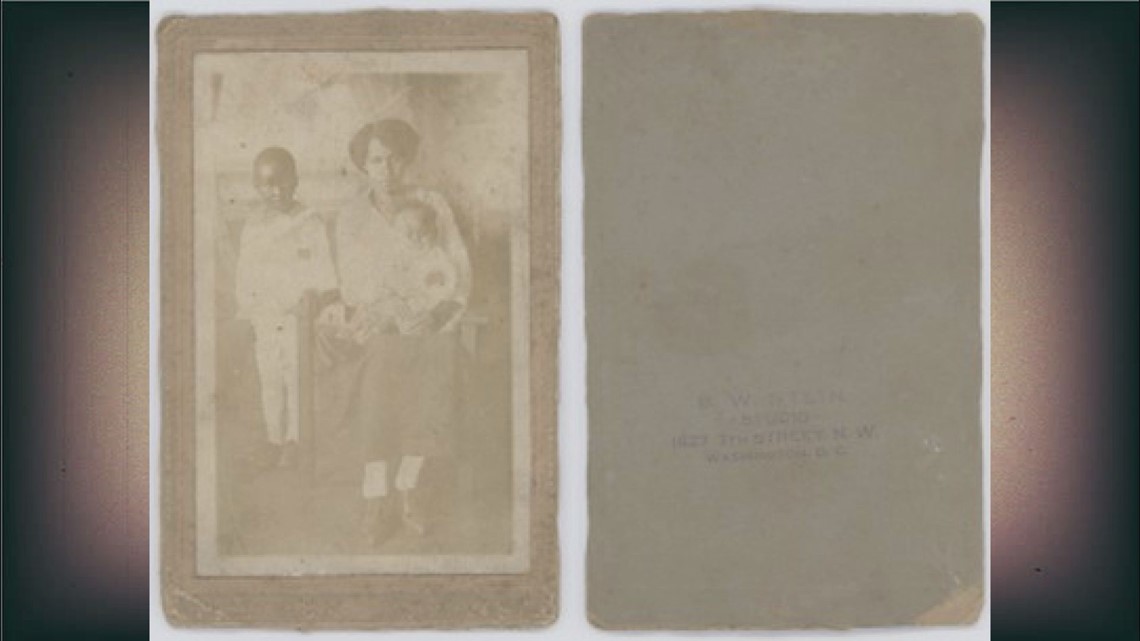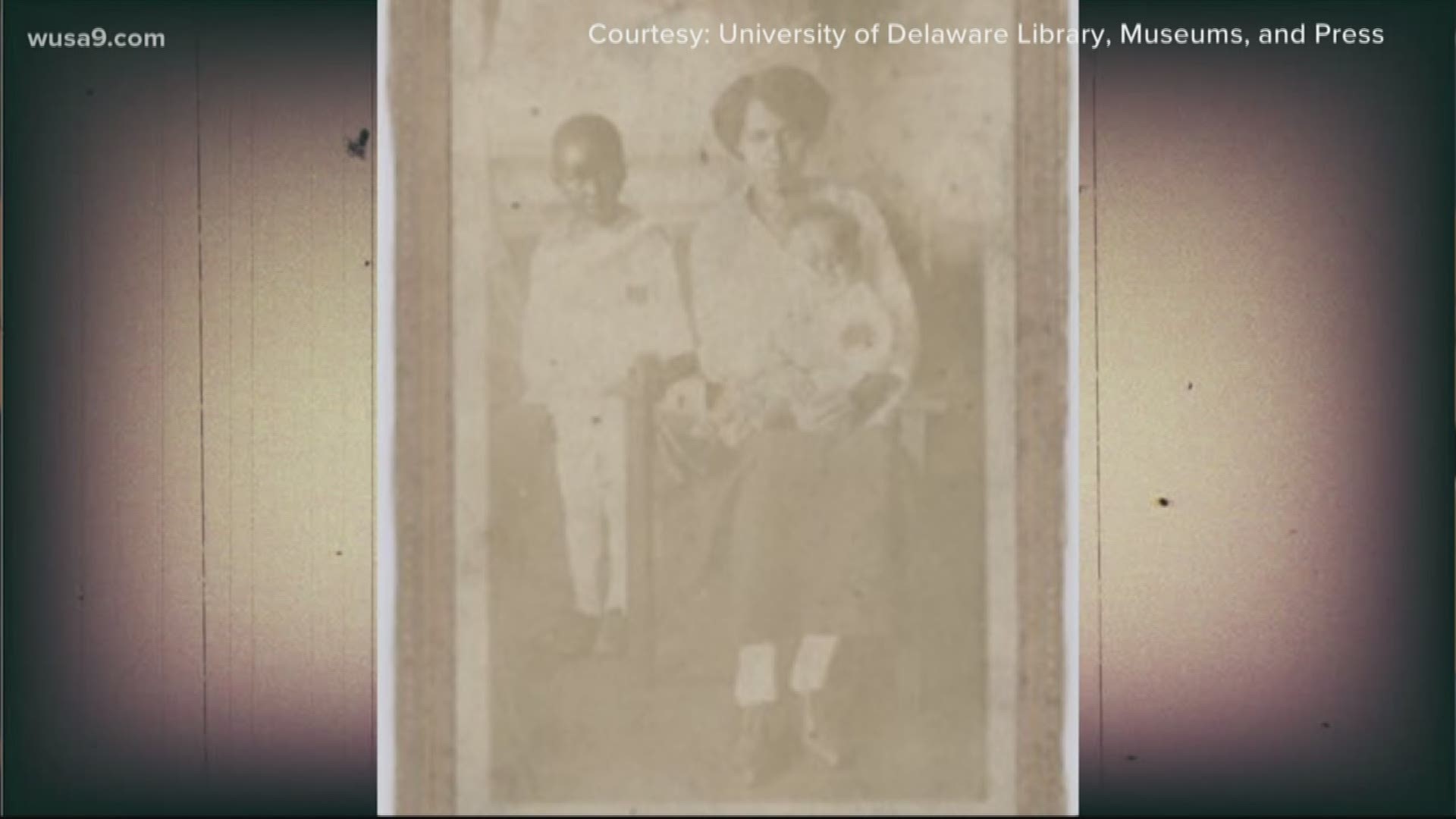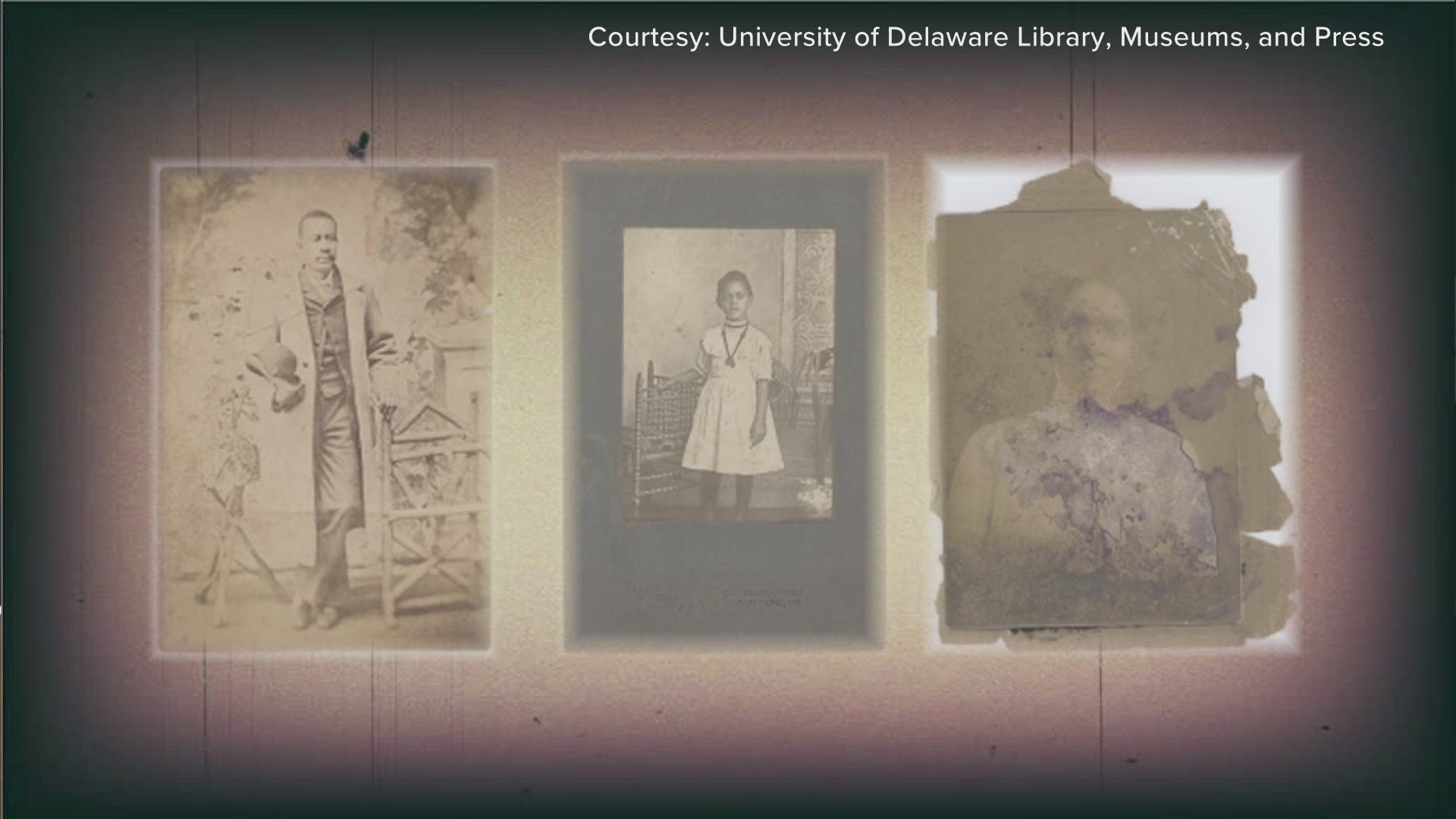NEWARK, Del — It is often said that every picture tells a story, but the full history behind a photo collection of unknown black people from the late 1800s and early 1900s remains a mystery.
The images were discovered nearly two decades ago by the family of a University of Delaware alum, Jessica Porter. The family donated the photos to the University of Delaware in 2001.
The pictures mainly depict black people and were found abandoned in Baltimore. Someone went through the photos, put each one in a protective sleeve, and stuck the collection in a box.
"They stayed in a box in a photographic studio, and it was labeled moldy photographs," Julie McGee, a professor of Africana Studies and Art History at UD, said.
The pictures went untouched for for than one decade until McGee got her hands on the box labeled "moldy photographs."
She soon discovered the value of the 53 pictures was worth much more than their label described.
"Someone’s mother, someone’s sister, someone’s aunt, someone’s son," McGee said, describing who the people in the pictures might be. "The photographs range from late 19th century to early 20th century. They represent largely portraits of women, with some portraits of children and men."
The photos had no names or descriptions, and were badly damaged.
McGee used the pictures to teach students how to preserve, archive and research a history object when there are not extensive details available.
"It became a course in which we were able to teach them, not only about the history of African-American photography and vernacular photography, but about what happens when you digitize an object and put it out into the public and you have to describe what it is," she said.
Students and researchers used a series of clues, such as period fashion, hairstyles, stamps from photography studios and other characteristics found in the pictures to discover more information.
It was found that the people were most likely middle class, not from the same family, and mainly from Baltimore.
One student working on the project was able to use the data to map out the photography studios some pictures were taken in Baltimore.
There were also pictures proven to have been taken in New Jersey, Philadelphia, and at least one from D.C.
"The D.C. photo stands out to me," Jesse Erickson, an assistant professor of English who coordinates the university’s digital collections, said. "It’s a lovely photo because it features a woman and two children. They’re sort of in their Sunday best. They are looking great. It's just, it’s a powerful image."
He found the image powerful, because the images would have been taken just years after slavery ended in America.
The late 1800s and early 1900s was a period when racism, segregation and discrimination were running rampant.


"Often times black people were portrayed in really racist lights and through caricature," Erickson explained.
He said African-American people were often depicted as impoverished and uneducated.
"These pictures tell a different story," Erickson said. "It shows us an example that we did live with dignity and we did live with a certain level of civic responsibility as portrayed through these images. I think it is really important for us to reclaim that."
Students who worked on the preservation project created a website which contains professional assessments and personal expressions.
The University of Delaware is now hoping to reunite those pictures with their families and learn more about the people depicted in them.
CLICK HERE to explore the full archive of photos in the Baltimore Collection.
--
If you know someone or a topic that should be featured in our ‘For the Culture’ segment, email Michael Quander at mquander@wusa9.com or send him a direct message on Twitter or Instagram.




